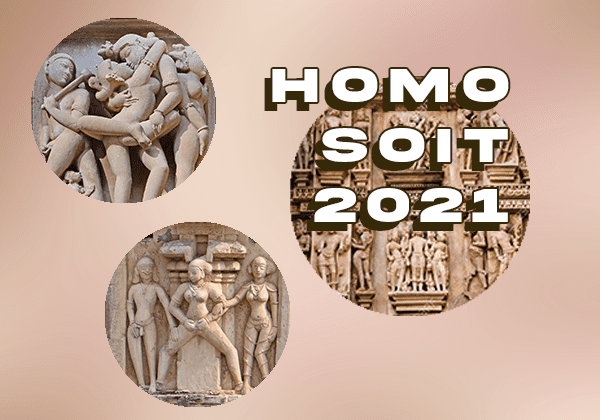I grew up hating my religion. I hated pujas, I hated the long rituals, I hated being involved. I hated that I didn’t know what any of it meant. Every time I would ask my mum why she always responded:
“Because it’s our culture.”
This failed to satisfy my questions and made me feel all of these events were lacking any deeper value if it is only ‘just for culture,’ and keeping up the tradition. I had to always be involved with all the other women during Puja preparations whereas my dad or any other uncle or boy my age didn’t have to. Eventually, I vented at the apparent contradictions:
“Why doesn’t dad do any of this?” I’d argue, but mum would press on with her task.
“Why did all the goddesses have husbands? Why couldn’t they have wives?” I exclaimed.
“Because it’s not natural,” mum would answer.
I felt as though this community would never be accepting of me. It couldn’t provide the comfort I desired, leaving me resentful of my ‘culture.’ Growing up, I believed Hinduism to be misogynistic and homophobic, yet it took me so long to realise that religion and culture are not synonymous.
In the summer of 2020, I came across a TikTok pointing out that Hinduism is in fact queer-friendly, but following the impact of British colonialism, Hinduism had been restructured to satisfy their interests. I was intrigued. I had to know more and ever since stumbling across that video I have been trying to educate myself on the queer aspects of Hinduism that I never knew existed. The more I learnt, the more comfortable I felt in my identity as a queer person.
After learning that Hinduism had a queer dimension, it became much harder to sustain belief in my aunties’ and uncles’ justification of queerness as unnatural through religion. Some may try to use religious texts to regulate same-sex desires; however, those are in multitude and often contradict each other. Moreover, are harsher on heterosexual crimes such as adultery; proclamations I don’t think aunties and uncles are ready to confront.
Hinduism does not directly refer to homosexuality but instead are integrated within narratives through sex change, homoeroticism and third gender characters. Within Vedic literature, sex and gender are divided into three natures or prakritis: pums-prakriti (masculine), stri-prakriti (feminine) and tritiya prakriti (a third category). Tritiya prakriti is sub categorised under napumsaka, a neutral state assigned to those who do not partake in procreation and instead is integral to balancing the state of nature.
Svairini or lesbians refers to independent women who live on their own or are married to other women. Similarly, Kliba refers to cisgender gay men. Within the Kama Sutra, oral sex within the third gender is explored and explicitly excludes heterosexual men to participate. Kliba were often employed by aristocratic women in theatre and dancing alongside important ceremonies as they were believed to bring good luck. Shandha can refer to trans women whilst Shandhi refers to trans men. Self-mutilation was greatly discouraged in Vedic culture thus some would bind their genitals or breasts down tightly.
However, today illegal practices of castration occur amongst the trans hijra group in the North of India influenced by colonial Islamic rule whereas in the south where the sultanate did not reach, the jogappa group do not practice castration. Bisexuals, also known as Kami or Kamini, weren’t often included within the third gender due to their ability to procreate.
Members of the third nature can even be found in architectures from ancient India. The Khajuraho temples built between 885 AD and 1050 AD can be found in Madhya Pradesh. The temples present several images of erotic acts carved into the walls including homoeroticism, from women embracing each other, men engaging in oral, and group orgies.
Within Hinduism there are multiple approaches to visualizing God and gender depending on the branch one may follow. The most common theology is God as Brahman whereby God is genderless, whereas others view deities as androgynous or even gendered. Hindu deities present themselves in different avatars. For example, Vishnu who presides over preservation also presents himself as Mohini, the goddess of enchantment. These deities, therefore, transcend gender binaries.
Many gods in Hinduism can be seen as representative of queer identities. Agni, the god of fire, represents bisexuality owing to being depicted as married to both the female goddess Svaha and the male Moon god Chandra. Budha Graha, representing Mercury, was born neither male nor female after their father cursed Graha for being a product of adultery.
Shikhandi was a brave warrior who advanced the winning of the 18-day Mahabharat war. Born as a female, he was raised as a son and later transformed into a male. King Bhagiratha of the Ikshvaku dynasty was celebrated for bringing the River Ganga from heaven to Earth and was born from Sapphic love.
On the other hand, Ardhanarishvara is the combination of Shiva, who presides over destruction, and Parvati, responsible for creation. Their androgynous form symbolises the masculine and feminine energies of the universe uniting destruction and construction and their indivisibility from each other. Alternatively, Ardhanarishvara can be viewed as beyond binaries, existing wholly as they are.
Hinduism is inclusive in its history of accommodating all types of people. Though homosexuality was decriminalised in 2018, it is still a topic of taboo and discrimination within Indian culture. I’m glad that the TikTok algorithm worked in my favour in allowing me to start my journey in educating myself, unlearning bias and gaining confidence in my queer identity. I’m still not completely comfortable with my relationship with religion and that’s okay as I’m still learning and growing to this day.





